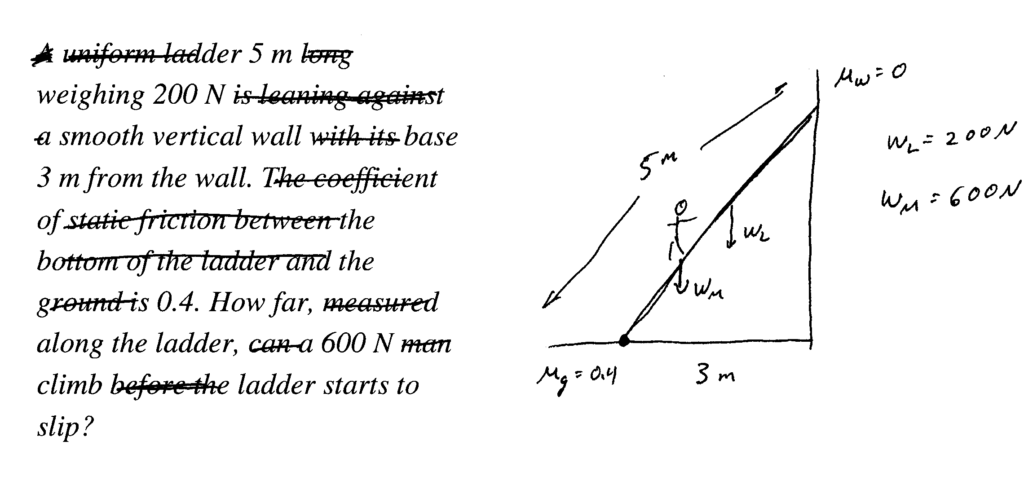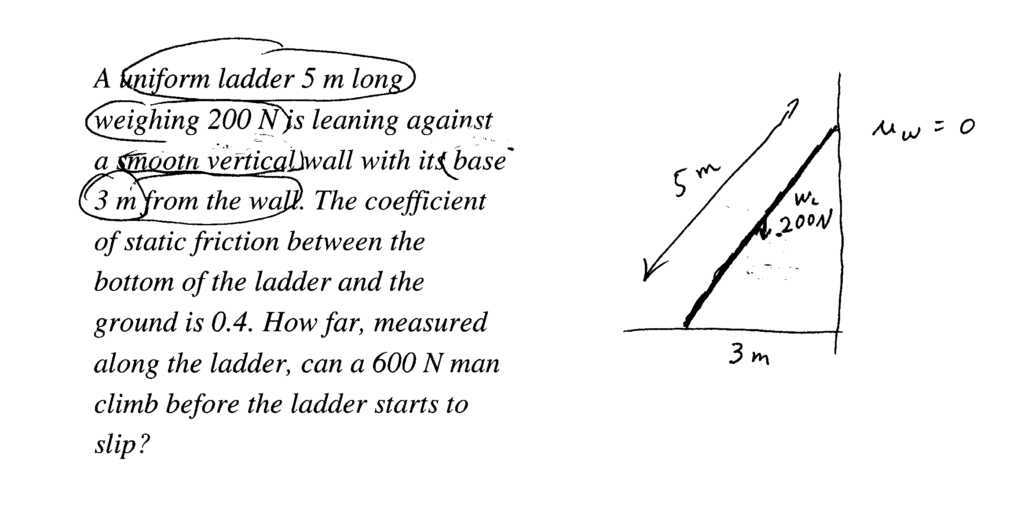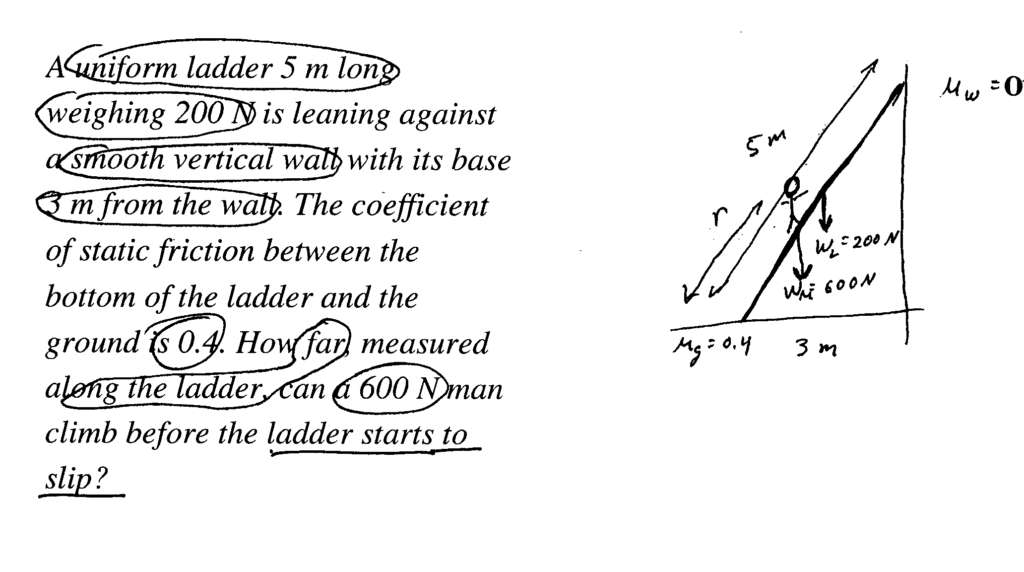How do you analyze word problems?
Translating problems from words into an easier format to analyze is a one of the first tasks you must do in order to solve problems. And in most physics problems, you should begin by translating the the stated word problem into a visual representation, i.e., you will likely draw a picture.
You might be interested in knowing that the idea of a word problem is an old idea. Indeed it is the idea of an equation that is new.
Before we might have written “average velocity is the distance covered per time.” But now we simply write v=d/t. We have gained a shorter statement but have added the translation from words to algebra. And we have also reduced the explicit expectation of the need for close reading.
But we are stuck with what we have. And word problems beset students in classes in mathematics and the sciences and also in the real world. However, there are a few general approaches to help you simplify and focus your efforts while solving word problems.
Let us choose a fairly standard problem from an intro physics book.
A uniform ladder 5 m long weighing 200 N is leaning against a smooth vertical wall with its base 3 m from the wall. The coefficient of static friction between the bottom of the ladder and the ground is 0.4. How far, measured along the ladder, can a 600 N man climb before the ladder starts to slip?
One way to simplify the material is simply to cross out the extraneous words and focus on the quantities.
– ——– ladder 5 m long weighing 200 N — ——- ——- – —— ——– —- —- — base 3 m from the wall. The coefficient of static friction ——- — —— of the ladder and the ground is 0.4. How far, ——– —– — ——, — a 600 N — climb before the ladder starts to slip?
By now you should be able to sketch a picture of this problem.

A second approach for a similar set-up is to use the circle method where you circle the information as you incorporate the material into a sketch.
First the ladder.

Then the wall and floor.

And finally the climber.

Back to How do you do well in physics?
